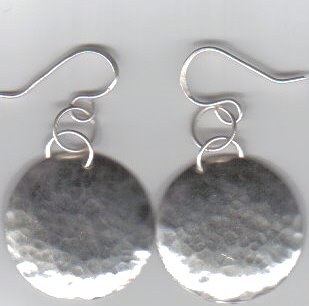When I cast with Argentium® Sterling silver, I use a torch (MAPP gas) and a centrifuge. After heating the crucible, I add the required amount of AS. After I have started to heat the Argentium® Sterling somewhat, I add a pinch of Borax. The AS melts quite quickly and as soon as it is fully molten, I release the centrifuge. Once the piece is cast, I let it air cool. This will help the Argentium® to become quite hard. Below is a picture of the button of a cast using Argentium® Sterling Silver.

After removing the cast from the flask, I bush it off with a toothbrush. The pictures below show a cast made from Argentium® Sterling Silver (left) and one made using regular Sterling Silver (right). The cast made from AS is somewhat gray but compared to the regular Sterling Silver, it is quite bright.


As you can see, there is quite a difference! The piece is ready to pickle.

After removing the cast from the flask, I bush it off with a toothbrush. The pictures below show a cast made from Argentium® Sterling Silver (left) and one made using regular Sterling Silver (right). The cast made from AS is somewhat gray but compared to the regular Sterling Silver, it is quite bright.


As you can see, there is quite a difference! The piece is ready to pickle.
